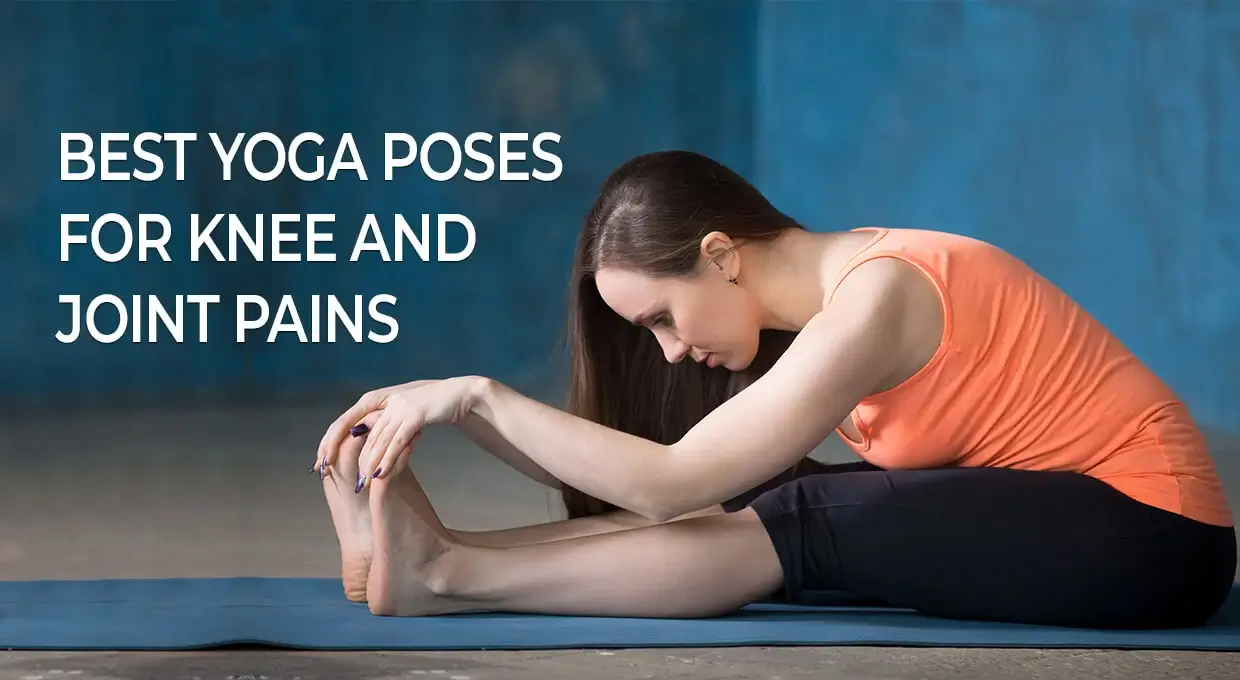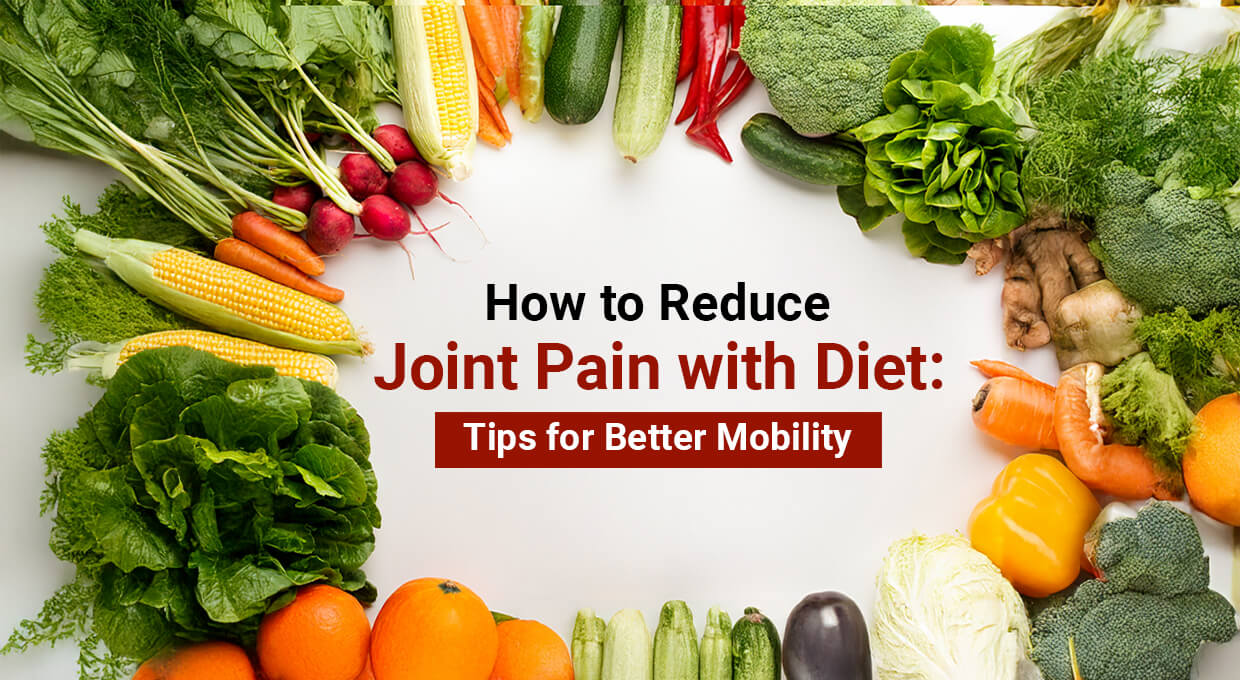Many people undergo problems with the knee at every age. One might suffer from swelling and inflammation due to cartilage torn or ruptured and infections in the gout. One needs to take several self-care techniques regarding the swollen knee. Physical therapy and knee braces may bring relief from the constant pain.
Yoga is another alternative way to counteract the problem of arthritis existing in the joints and knees. Compared to aerobic and regular exercising like skipping, jumping and swimming, yoga would raise the comfort levels in the body and bring relief from the stressful mind.
Improvement might be seen instantly. It may take time but it will heal the problem from the root levels. There are some simple yoga asanas for knee joint pain which will help you to gain maximum benefits:
Chair Pose (Utkatasana)
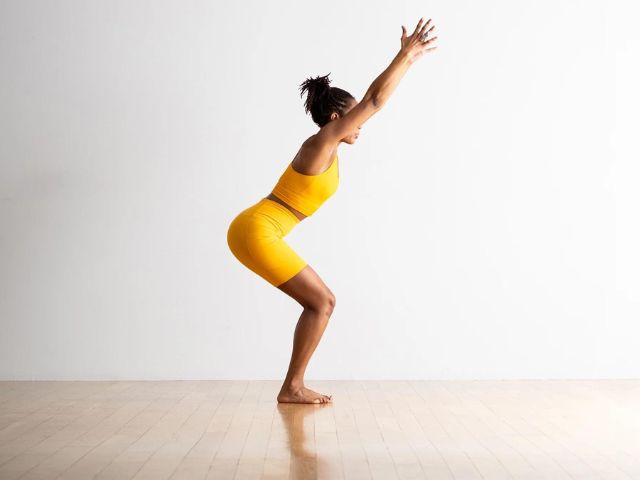
You will be making a posture of sitting in the chair. You can do it without using any chair. It will help in strengthening the muscles, thighs and connective tissues.
This posture will not only release you from nagging knee pain but will improve the flexibility of the spinal cord.
Method of Practicing Chair Pose (Utkatasana)
- In a standing position, make yourself comfortable by keeping your legs partially distant from one another.
- Bend your knees in such a way that you are sitting yourself in a chair.
- Maintain your hips at the 60-degree angle.
- And keep your palms together.
- Practice breathing for 5 to 10 times a day.
Garland Pose (Malasana)

This specific position is called the malasana in Hindi or Sanskrit, and it corresponds to how you sit on an Indian toilet to empty the seat. It might show the composition of a garland when seated in this manner. People often suffer from knee pain rising from regular constipation or Vata dosha in the body.
This yoga posture is considers as one of the best home remedy for joint pain. By practicing this posture, you will get relief your arthritis pain and help in gaining easy movements.
Steps of Practicing Garland Pose
- Make yourself comfortable by allowing yourself in a squat position.
- Keep your feet at a certain distance from one another.
- You must not let your hips touch the ground in the seated position.
- Keep your palms close to one another in a namaste posture.
This specific posture will not only strengthen the joint structure of your body but it strengthen your heels, ankles and entire feet.
Warrior Pose (Virabhadrasana)
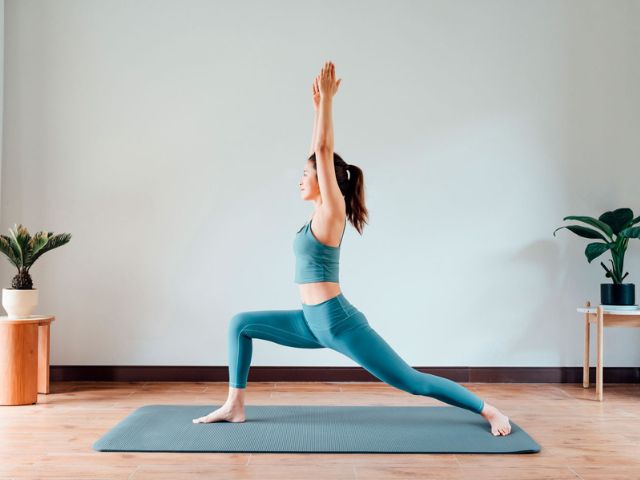
You are going to be spreading your arms apart, putting your face to one side, and opening your legs wide apart. You will be bending one of the knees. It will help reduce the stiffness and enhance the mobility of your body.
Steps of Performing the Warrior Posture
- Stand and spread your legs across one another.
- Keep your arms sideways up and straight.
- Bend one of your feet towards the side.
- Try to maintain this position for 5 minutes to 10 minutes.
By being in this posture for a certain amount of time, you will be improving the mobility of your knees. It will make you flexible and strong.
Extended Side Angle (Utthita Parsvakonasana)

By extending your hands sideways and then leaning to a side, you can gain control over your consistent knee pain. You can act in the way of bending closer at the 90-degree angle to combat the problems of stiffness and inflammation in your knees. With regular practice of this type of yoga, you will witness recovery from pain in other joints.
There is a need to cautious about performing this particular yoga. Leaning sideways may not be comfortable for many people who are suffering from intense knee pain.
How to Do the Extended Side Angle?
- From the position of virabhadrasana, lean your upper part of the body sideways.
- Touching the ground with one hand and raising the other hand up to the ceiling.
- Bending sideways.
Half Moon Pose (Ardha Chandrasana)

This yoga will release the pain from the knee, improve the circulation of blood in the knee and increase flexibility and help you to move with ease.
How to Perform the Posture?
- You will be keeping your legs wide open and
- Bend backward to such an extent that you make the shape of the moon.
It is an easy posture that would not take much effort unless you have back pain. Try initially with low intensity if in case you are suffering from lower back pain.
High Lunge Pose
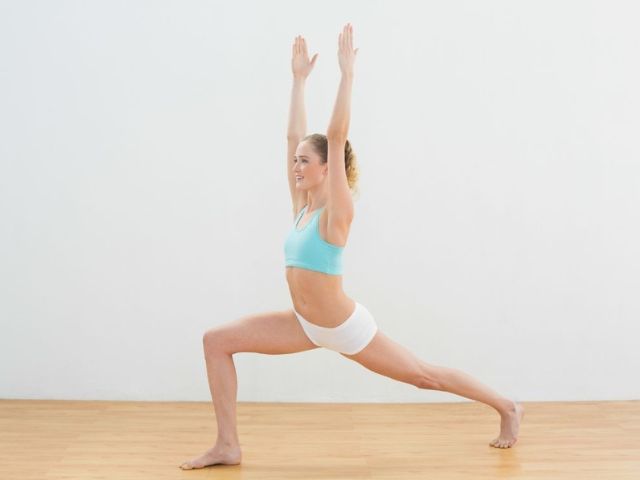
You will stand in posture of opening up your arms after moving forward one leg and keeping another leg behind.This posture is quite similar to Virabhadrasana. It helps in improving the spinal cord movement along with enhancing flexibility in feet and legs.
How to Do a High Lunge Posture?
- First, stand with legs apart.
- Move one of your legs ahead and bend it a little
- Keeping another leg behind.
- Opening up your arms.
This is another yoga for knee pain which will maintain your body in stable condition and enable you to gain strength in all your joints.
Goddess Pose (Utkata Konasana)

By keeping your legs widened apart and maintaining in partially seated position, you can gain strength in your knees, spines and shoulder joints. Initially, it may pose a challenge for many beginners who may find difficulty in raising heels.
How to Do Goddess Pose?
- Keep your two feet at a distance from one another and make an angular pose of 90 degrees.
- Allow your body to maintain a posture of sitting on the chair.
- Raise your heels at an angle of 45 degrees.
- Keep your palms close to each other in folded way.
- Breathe in and breathe out and continue for the next 10 minutes.
Bridge Pose (Setu Bandhasana)

This posture might seem little bit complex for many people who are suffering from a severe arthritis condition. Better to take guidance from your doctor to practice this complex yoga. Otherwise, this yoga is extremely beneficial for people who undergoing any kind of physical pain in the joints or in other parts of the body.
How to Do the Bridge Pose?
- Lie down straight.
- Keep your hands sideways.
- Bending the legs.
- Raising the lower part of the body
- Hold the breathe and release it several times a day.
Reverse Tabletop (Ardha Purvottanasana)

It is about positioning your body like a table by keeping your back towards the floor. You must allow your chest and shoulders to open up while you face the wall. This may be again a difficult posture but it might give a long lasting relief from knee pain. To reach out to the level of perfection, you must have an immense power in the muscles of the buttocks and thighs.
How to Do the Reverse Tabletop Posture?
- Keep your knees bent and hands on the ground.
- Maintain the support with your entire body structure like a table by keeping your front part of the body towards the wall.
- By letting your hands and feet on the floor, you can maintain your hips at equal level with your knees.
- You must allow back portion of your head towards the floor.
Be cautious while doing this yoga for knee pain, you can take advice from the trainer or doctor if your pain is so severe.
Child’s pose (Balasana)

This posture can be easily done by anyone to gain control over pain in the knees and in other parts of the body. It is similar to the child taking first step to crawling on the floor.
How to Do the Child’s Pose?
- Fold your knees and raise your heels on the mat.
- Bend down your upper part of the body.
- Make sure to let your forehead touch the floor.
- Keep yourself in this position for at least 5 minutes.
By practicing any of the postures daily, you can keep your joints in appropriate alignment. It will enhance your flexibility and maintain your balance over your body and relax your mind. Any yoga of beginner’s and intermediate levels would strengthen your bones and boost your immunity levels.
Conclusion
Knee problems can cause swelling, inflammation, and infections at any age. Self-care techniques like physical therapy and knee braces can alleviate pain, while yoga can help counteract arthritis by raising body comfort levels and reducing stress. Simple yoga asanas like chair pose and garland pose can help alleviate knee pain and improve spinal cord flexibility.
Constipation or Vata dosha can cause knee pain. Practice garland pose, warrior pose, and extended side angle to strengthen joints and improve mobility. Other yoga poses include extended side angle, half moon, high lunge, and goddess poses. Angular pose, Bridge pose, and Reverse Tabletop pose can also help alleviate knee pain. However, yoga for knee pain should be cautious and advised by a trainer or doctor.

